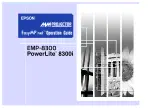
- 20 -
3.2. Customer Acceptance
3.2.1
SCOPE
This document establishes the general workmanship standards and functional
acceptance criteria for LCD color monitor model GW2760HS Produced by BenQ Peripherals,
Inc.
3.2.2
PURPOSE
The purpose of this publication is to define a procedure for inspection of the LCD monitor
by means of a customer acceptance test, the method of evaluation of defects and rules for
specifying acceptance levels.
3.2.3 APPLICATION
The "Customer Acceptance Criteria" is applicable to the inspection of the LCD monitor,
completely packed and ready for dispatch to customers. Unless otherwise specified, the
customer acceptance inspection should be conducted at manufacturer's site.
3.2.4
DEFINITION
The "Customer Acceptance Criteria" is the document defining the process of examining,
testing or otherwise comparing the product with a given set of specified technical, esthetic and
workmanship requirements leading to an evaluation of the "degree of fitness for use", including
possible personal injury or property damage for the user of the product.
3.2.5
CLASSIFICATION OF DEFECTS
The defects are grouped into the following classes:
Critical defect
A critical defect is a defect that judgment and experience indicate is likely to result in
hazardous or unsafe conditions for individuals using, maintaining or depending upon the
product.
Major defect
A major defect is a defect, other than critical, that is likely to result in failure, or to reduce
materially the usability of the product for its intended purpose.
Minor defect
A minor defect is a defect that is not likely to reduce materially the usability of the
product for its intended purpose, or is a departure from established standards having little
bearing on the effective use of operation of the product.
3.2.6
CLASSIFICATION OF DEFECTIVES
A defective is a product which contains one or more defects. The defective will be
classified into following classes:
















































